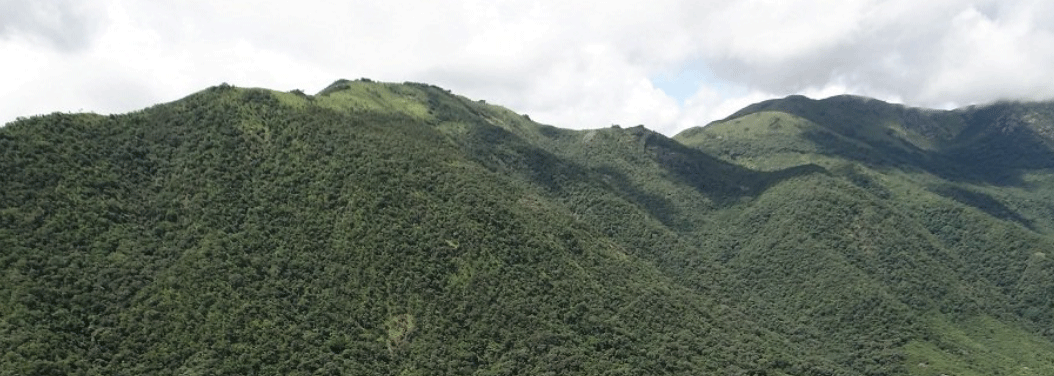Bhubaneswar: To preserve local habitats rich in plants and animal life, the State Government has declared Mahendragiri hill in Gajapati district as Biodiversity Heritage Site.
ACS Forest, Environment & Climate Change (FE&CC), Mona Sharma has issued a detailed notification on this crucial announcement.
“The Government has been pleased to declare an area of 4250 hectare of Mahendragiri covering two reserve forests (Idongiri and Mahendra) in the district of Gajapati under forest division of Parlakhemundi as the second ‘Biodiversity Heritage Site of Odisha,” read the notification.
Notably, Mandasaru Gorge area, spread over 544 hectare in Kandhamal district, is State’s first such heritage site, notified in 2016.
The State Government has issued the notification after receiving recommendations from the Odisha Biodiversity Board.
OBB Chairman and veteran IFS Officer Rajiv Kumar took up the issue with all seriousness and approach the State Government for such an initiative.

The Board, prior to approaching the State Government, had received proposals from Biodiversity Management Committee of Gandahati GP, DFO, Parlakhemundi and non-government organisation LIPICA, Berhampur to declare Mahendragiri hill as biodiversity heritage.
Mahendragiri hill, located 1000 metre above mean sea level, is one of the biological, ecological and archaeological important mountain ecosystems in Odisha.
The hill ecosystem acts as a transitional zone between flora and fauna of Western Ghats and the Himalayan biogeographic zones making the region an ecological estuary of genetic diversities.
With increased altitude, the hill complex demonstrates several micro climatic conditions like tropical shola, tropical semi-evergreen, tropical moist-deciduous & tropical dry deciduous.
The diversified vegetation with rich floral diversity represents 40% of the reported flora of Odisha.
A total of 1,358 species of plants including 1,042 species of angiosperms under 122 families, 60 species of pteridophytes, 104 species of bryophytes, 53 species of lichens and 72 species of macro-fungi and 2 species of gymnosperms occurring in the hill ecosystem.
In terms of botanically curious plants, 44 species of orchids, 8 species of insectivorous plants and more than 300 species of medicinal plants are found here.
Of late 5 new plant species with their type localities in different parts of the hill have been discovered from Mahendragiri which has increased the phytogeographical significance of the hill.
The hill is an abode of 20 species of threatened medicinal plants ascertained by Foundation for Revitalization of Local Health Tradition (FRLHT), Bangalore.
Out of 154 threatened plant species identified for Odisha, at least 60 species are reported to occur here which is ascertained from various scientific publications.
It is also an abode for two species of tree ferns: Cyatheaspinulosa (Flying spider-monkey tree fern) and Cyatheagigantea (Tree fern). Out of 153 species of Orchids found in Odisha, 44 species are occurring here.
Similarly, out of 41 threatened medicinal plants found in Odisha as per IUCN, 20 species are occurring in Mahendragiri with suitable population for conservation function.
The faunal diversity of the hill consists of 388 species of animals which include 27 species of mammals, 165 species of birds, 60 species herpetofauna (23 species of snakes, 15 species of amphibians, 3 species of turtles, 19 species of lizards), 100 species of butterflies and 36 species of moths occur here.
The hill complex is a critical habitat for Caecilians, Golden Geckos and frogs, 6 species of owls and 3 species of owlet.
It is also the habitat for Rock Python and Royal Bengal Tiger. The four- horned antelope or Chowsingha, the Ruddy mongoose (Herpestessmithi), East- Himalayan long- tailed minivet, red breasted falconet, gray-headed fishing eagle, white eared bulbul and slender billed scimitar babbler are found here are of great conservation interest.
Mahendragiri hill also plays a pivotal role in maintaining the ecological balance and controlling the climate of the entire south Odisha and Srikakulam district of Andhra Pradesh.
Presence of high altitude dry ever-green Shola Forest above 1000 m above mean sea level is the distinctive vegetation of this hill which supports several threatened and endemic plants and animals.
It is also home to ancient temples of Kunti, Bhima, Arjuna and Yudhisthir which come under the coverage of Antiquate Monument Archaeological Remains and Sites Act 1958 and draw nearly 1 lakh devotees every year.
The rich biological resources of the hill and the associated traditional knowledge practised by the tribal communities residing in and around this ecosystem are under immense pressure due to various anthropogenic and climatic factors and seek long-term protection, conservation and management measures.


